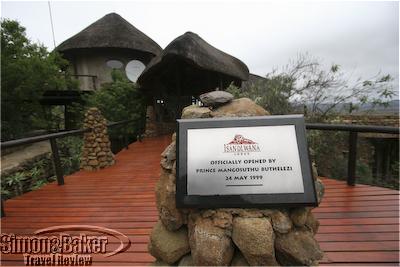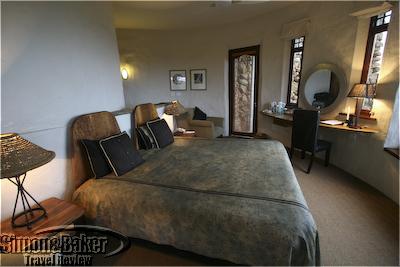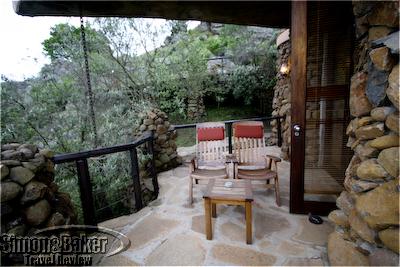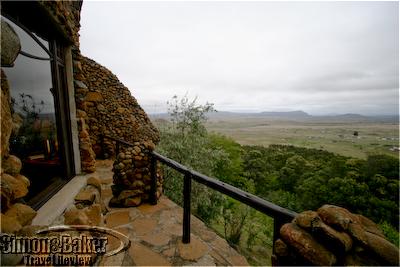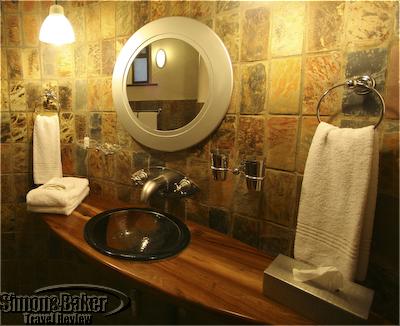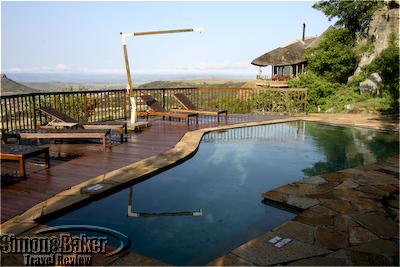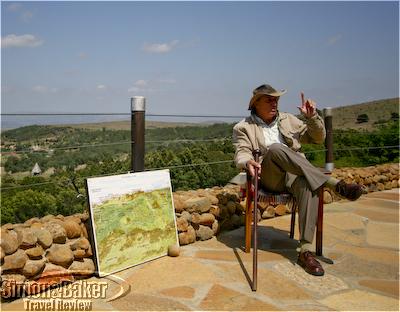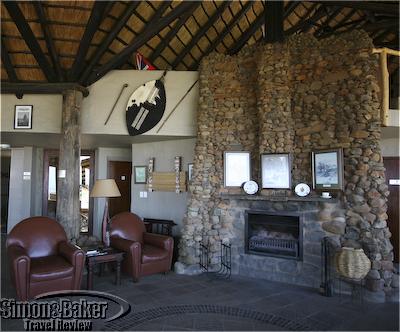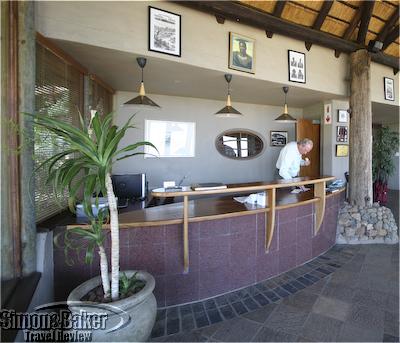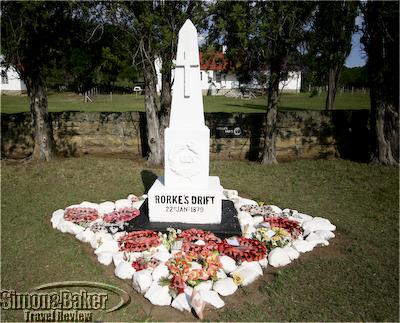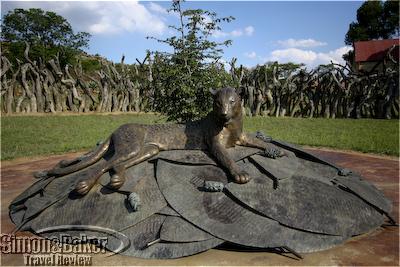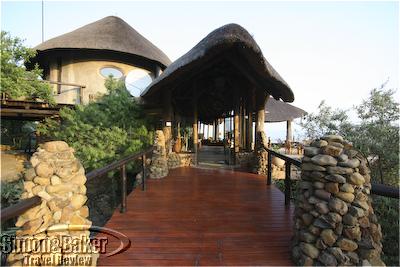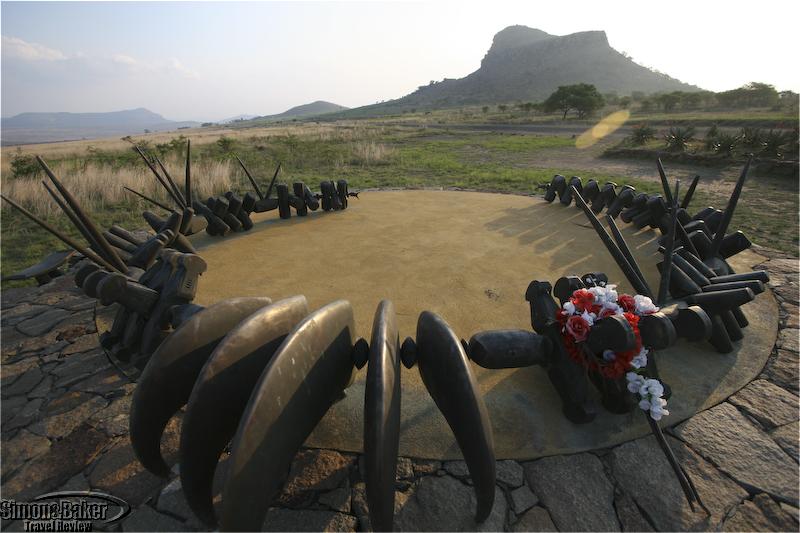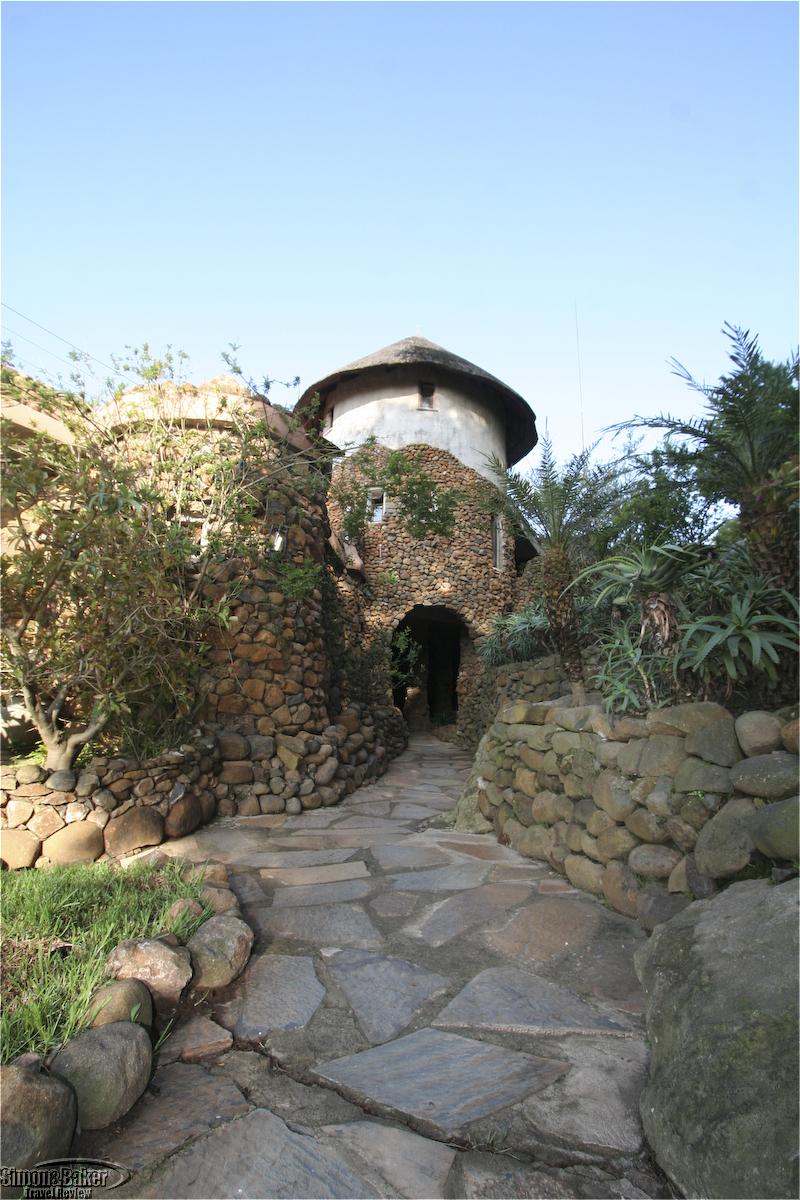
The sound of cattle mooing in the early morning reminded me we were in a rural area. Soon, with the aid of Dalton Lindizwe Ngobese, our Zulu guide (when he wasn’t conducting tours he was the lodge’s friendly barkeep), we explored a corner of the small Zulu community that was adjacent to and part owner of the lodge. As we walked around observing the native housing structures and kraals I remembered that cattle are the Zulu’s most prized possessions.
We dedicated the following day, morning and afternoon, to Robert “Rob” Gerrard, FRGS, a South African born retired British Army officer cum resident historian at the lodge specializing in Anglo Zulu and Anglo Boer Wars. While we sat in the sunshine of the lodge terrace, he shared vivid descriptions and highlighted the leaders and main participants of the Battle of Isandlwana. As we faced the site of the famous battle he painstakingly brought to life the events that led to the devastating British loss. The location of the lodge is significant as the place where the Zulu commander stood during the tribe’s victory against the British in 1879.
After a break for a midmorning snack he concluded his narrative on the grass at the actual location of the battle, a short drive from the lodge and visible from the lodge terrace. We gave that part of the tour a miss to avoid the necessary strong insect repellent spray and the pesky ticks that are abundant in the Zululand grass that time of year. In the afternoon, our enthusiastic and well informed guide escorted us in a lodge vehicle to Rorke’s Drift (a 20-minute drive) for the second major battle site which he revived for us while we walked around and later settled in portable canvas chairs under the shade of a tree. Although I am not a fan of battles his telling of the Anglo Zulu encounters near Isandlwana Lodge captured my interest and brought the famed battles to life. It made the visit to Isandlwana worthwhile and memorable.
The 15-room hillside lodge was ideal for battle buffs, especially those interested in the Zulu British battles of the area, Isandlwana and Rorke’s Drift. In addition to the picturesque view, home style meals, cozy and comfortable accommodations and friendly staff, we liked the property’s community orientation. Isandlwana Lodge was made possible as a result of the efforts of many people and owned by two American partners and the surrounding Zulu community with proceeds partly benefiting the community itself.
Class Of Accommodation A four star luxury lodge
Connectivity There was satellite Internet access via a lodge computer in the library (40 rand for 30 minutes, 75 rand for 60 minutes and 150 rand for daily use).
General Manager Andre Broerse
Handicapped Access The lodge was able to accommodate people who are “not seriously handicapped.” According to hotel staff some of the rooms are large enough to accommodate a wheel chair. The staff were able to add a shower seat and a flexible shower head to the bathroom as long as guests are able to step over a small rise into the shower.
Length Of Stay Two nights
Location The lodge is located in the iNyoni Rocks escarpment in the heart of South Africa’s Zululand.
Owned-Managed The property was co-owned by Magalen O. Bryant, Mary Pat Stubbs, Howard N. Parks, and Isandlwana Community Development Trust.
Pets Allowed No
Size Twenty-seven employees worked at the four hectare property that housed 15 guest rooms.
Year Opened-Renovated The lodge was established in 1999 with the help of 80 local people. In 2008 and 2009, the management re-did the soft furnishings in all the bedrooms and recovered media room chairs and bar stools.
Room We stayed in Rooms 1 and 12, each with a fine view of the area, a private balcony and about 24 square meters of bedroom space. Room One, Cetshwayo, was named for the Zulu king of that name (Cetshway kaMpande), and Room Twelve Ndabuko, named for another Zulu, faced the neighboring Zulu village. Room One was noteworthy at the lodge as the room where President Jimmy Carter stayed when he visited the area. Once inside the room, a small foyer area led to the bathroom on the right and a wood closet with a safe on the left set against the wall. The rooms, almost identical except for their location and view, had simple putty colored carpeting, somewhat worn, as well as white walls, high ceilings, white shades over the windows and framed African motif artwork.
A queen bed with two wood headboards framed by matching wood night tables and lamps occupied the center of the room. There were two sand colored armchairs, one on either side of the bed, and a built-in wood table against the wall that faced the bed. On it there was a coffeemaker and electric hot water pitcher, a cookie jar filled with cookies as well as a fruit bowl. A round framed mirror hung above the table and narrow and long windows were on either side of the mirror. The most salient feature of the room and the area where my eyes where always drawn was to a large window that took up most of the center of the room. Two doors, one on each side of the room, led to an outdoor patio with a table and two chairs. Although it was too windy and chilly to sit outside for long I ventured onto the balcony to enjoy the view.
Facilities There was a dining room, curio shop, bar, swimming pool, media room, and library.
Pool The oblique shaped pool was 9 meters long by 3 to 5 meters wide; and 1.3 meters deep at the shallow end and 1.5m deep at deep end.
We also went on a short Zulu Village tour. On the afternoon of our arrival, Dalton Lindizwe Ngobese, a Zulu historian from a nearby village and member of the International Guild of Battlefield Guides who worked at Isandlwana, spent two hours telling us about modern day Zulu life and customs. As we walked he shared cultural insights about traditional healers (although the healer was out of town we briefly saw the local healer’s building and met the healer’s trainee, a somber young woman with a toddler at her side), Zulu society, the role of cattle, education and related issues. We also visited the smoky building of the ancestors of a nearby family who participated in the tour program.
Other The lodge is built on the side of the Nyoni Rock just under where the Zulu Commander stood during the Battle of Isandlwana on January 22,1879. It overlooks Mount Isandlwana and a plain. There was a satellite television and VCR available in the media room.
The Mangwe Buthanani Traiditional Authority worked with the two American investors, Maggie Bryant and Patt Stubbs, who built the lodge. The local Zulu community is part owner of the lodge (up to 10 percent) and receives a part of the gross revenue though the Isandlwana Community Tribal Trust for schools, clinics and community projects.
Bryant is former chairperson of the Fish and Wildlife Foundation in the United States. Projects benefiting the community, above and beyond the revenue generated by the lodge, were implemented in partnership with the Wild Foundation, a United States based conservation and sustainable development non profit organization. Some of the work going on in the village included community gardens, craft making, sewing classes, and development of a computer lab in one of the elementary schools. Past lodge guests had contributed donations for various projects and a number of them had “adopted” school children, committing to pay school fees and furnishing uniforms for a year. The Impumelelo Yesandlwana (Success for the People of Islandlawana) projects included an Adopt-a-Child, Support Our Schools, Sustainable Agriculture, Food Parcels for HIV Orphans and general donations.
Date Of Review October 2009
Reviewers Article by Elena del Valle
Photographs by Juan Cooper
Service The staff were pleasant, personable, well organized and efficient. There was twice daily room service. I was surprised to discover that one of the staff cleaned my muddy boots after I commented they had gotten wet at the previous property and were still damp. They had offered to place them where they would dry easily and when they returned them they were dry and, to my delight, clean.
Would You Stay There Again? Yes
Contact Information
- P O. Box 30
- Isandlwana 3005
- KwaZulu Natal
- South Africa
- +27 34 271 8301/4/5
- +27 34 271 8306
